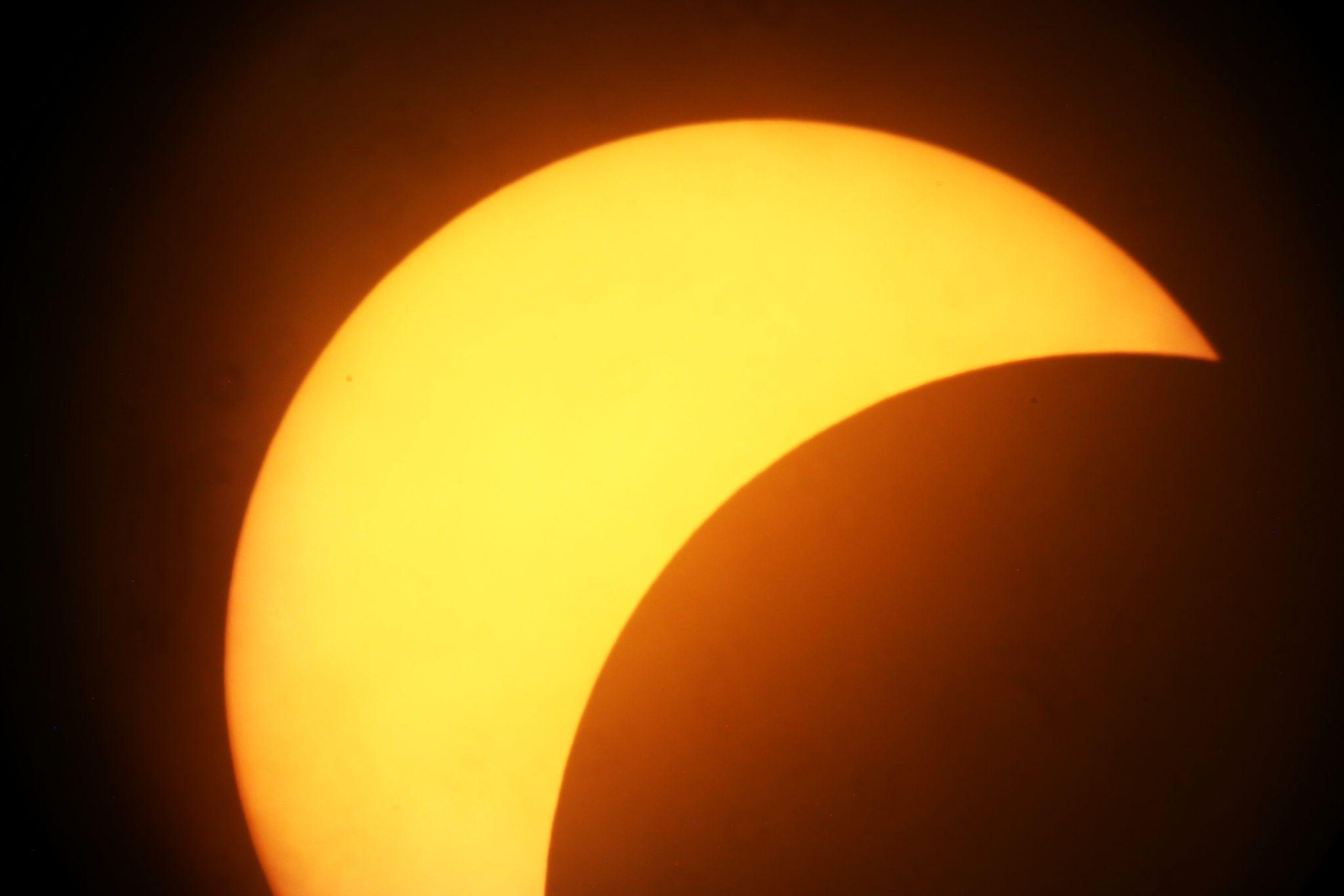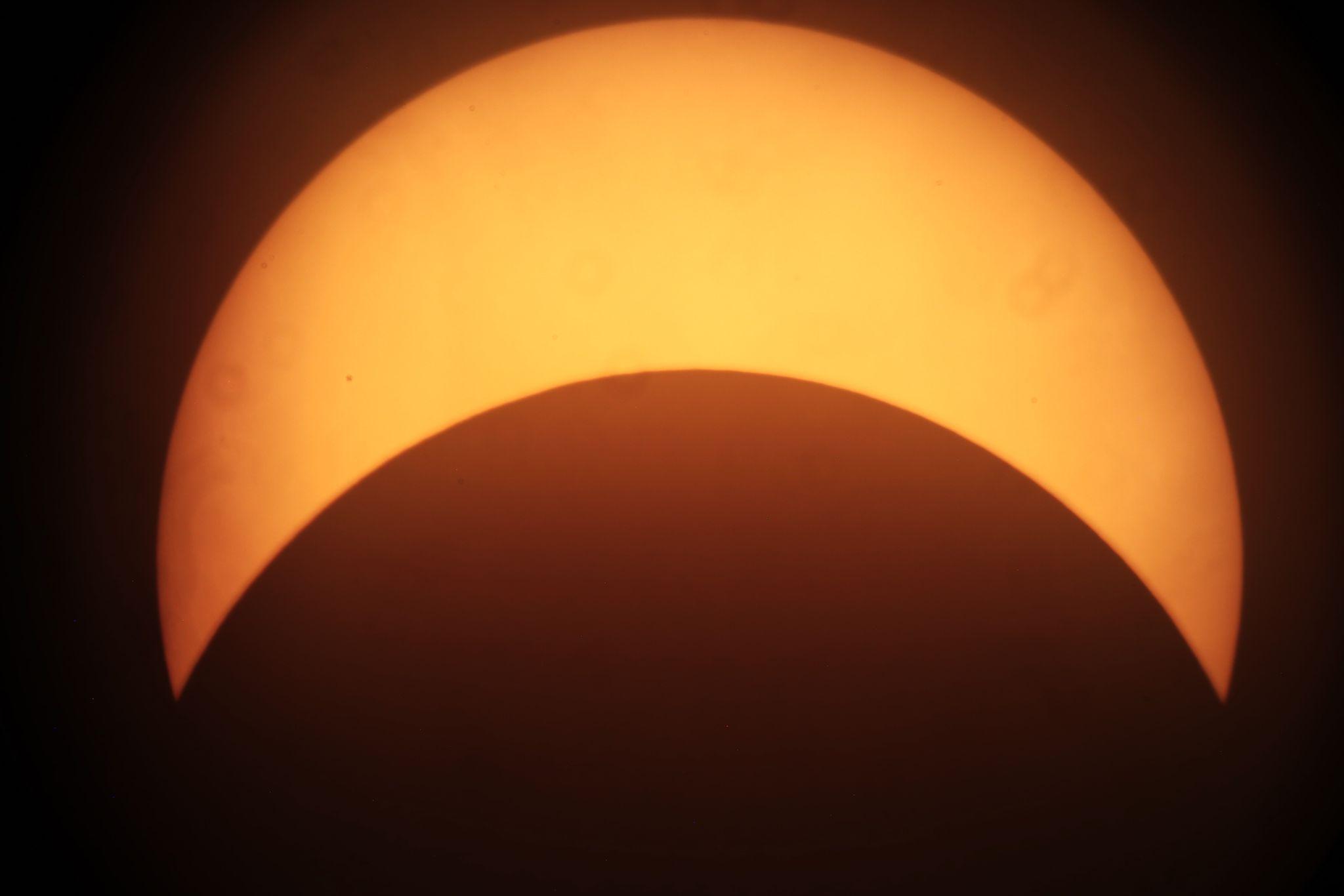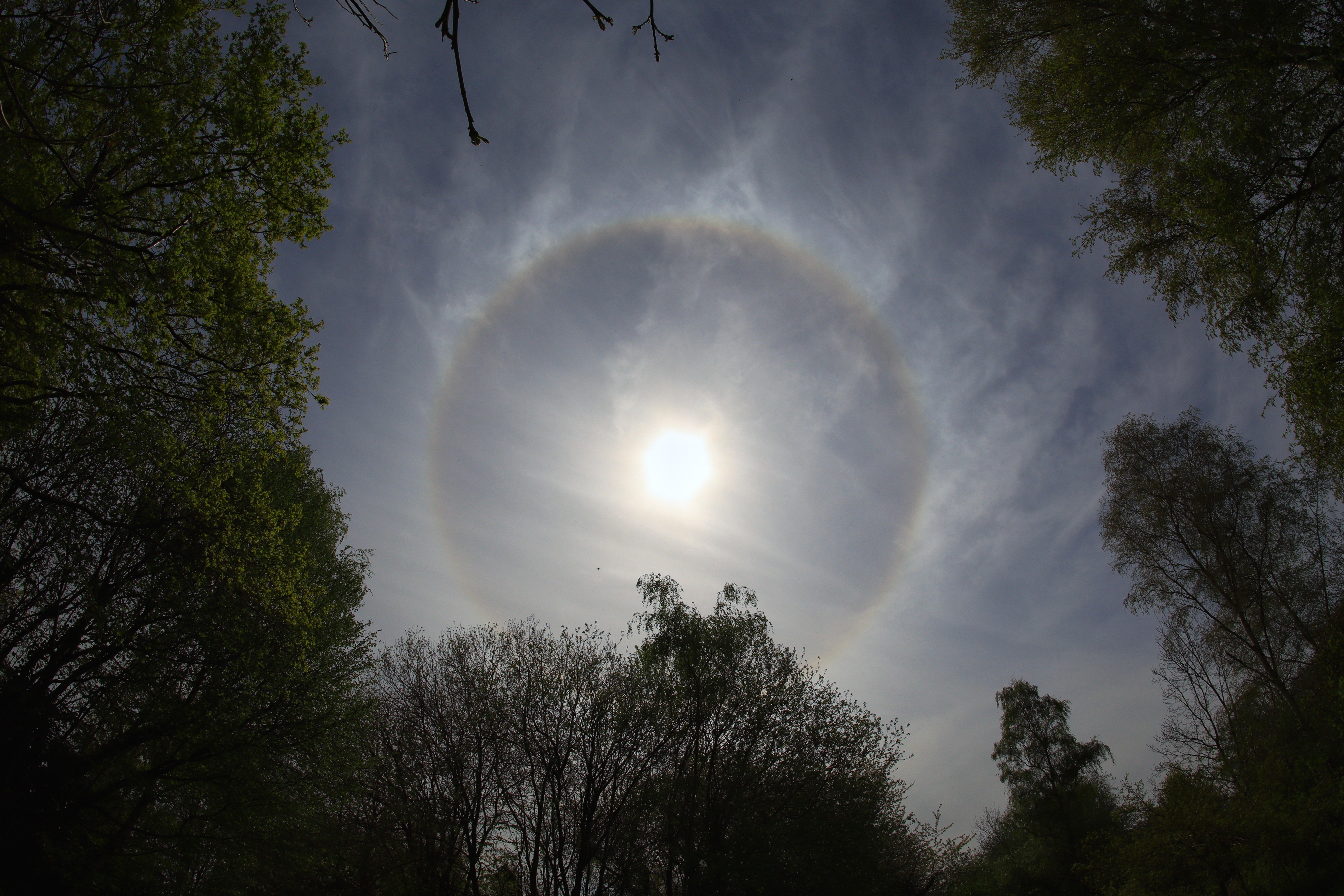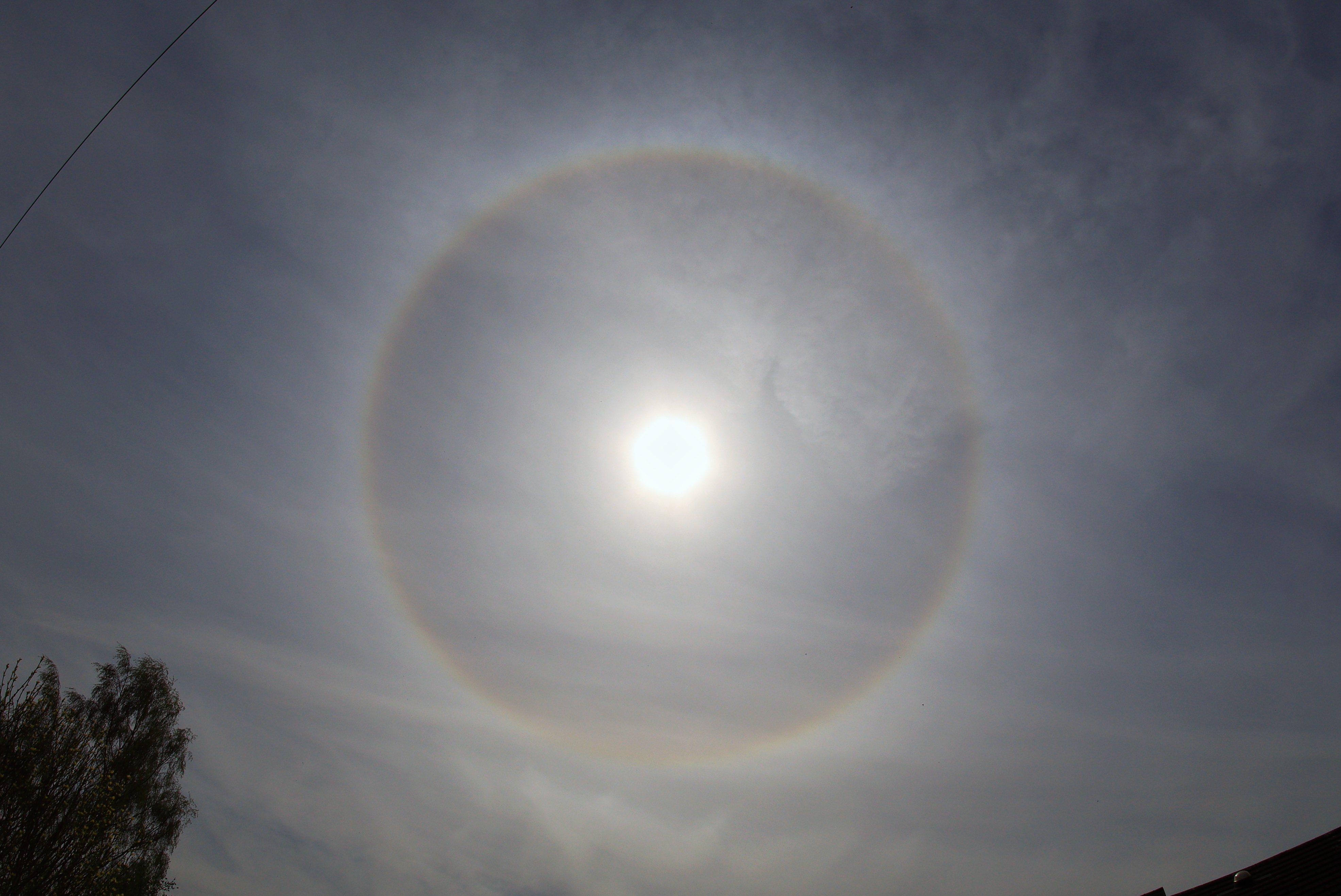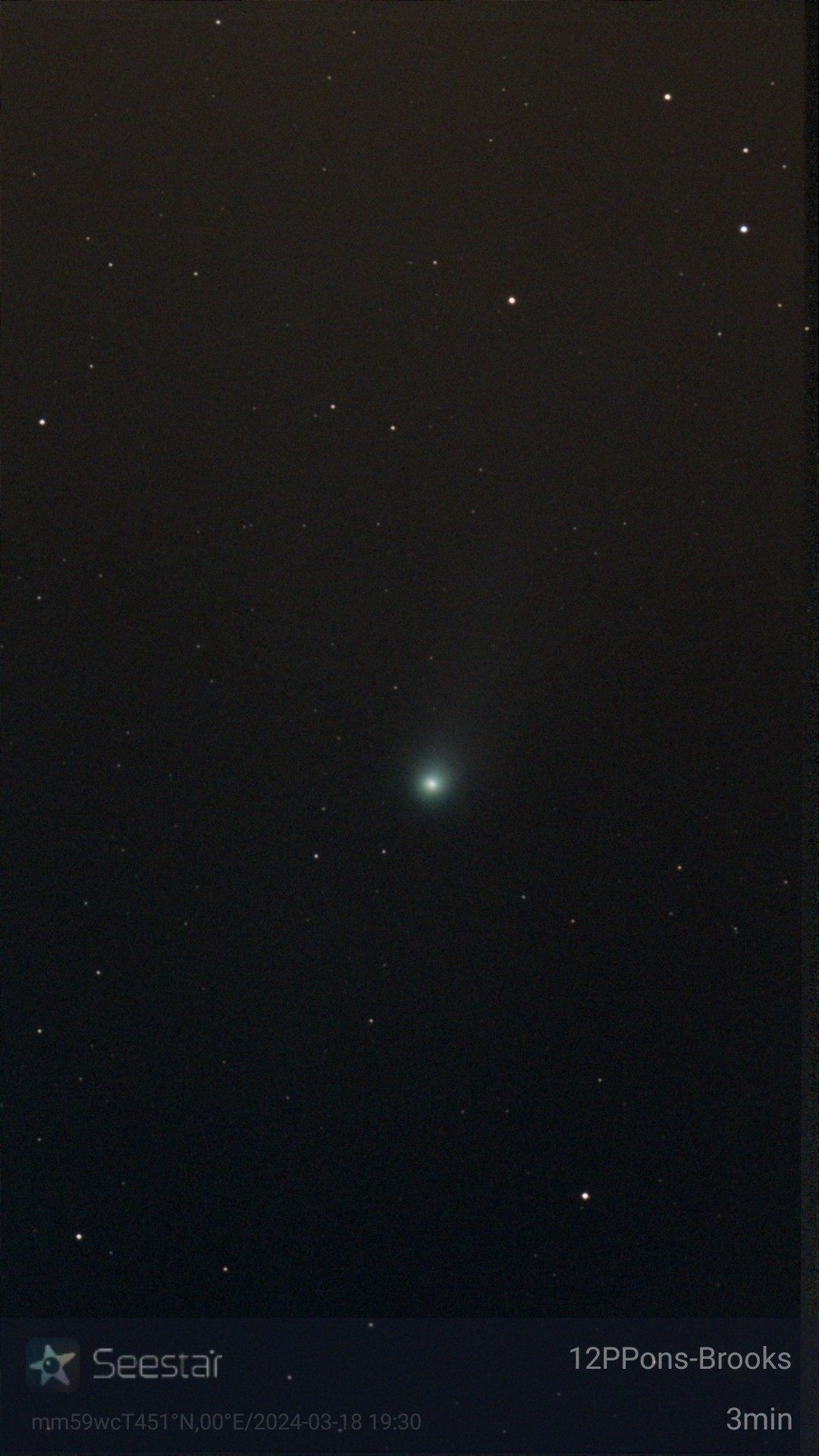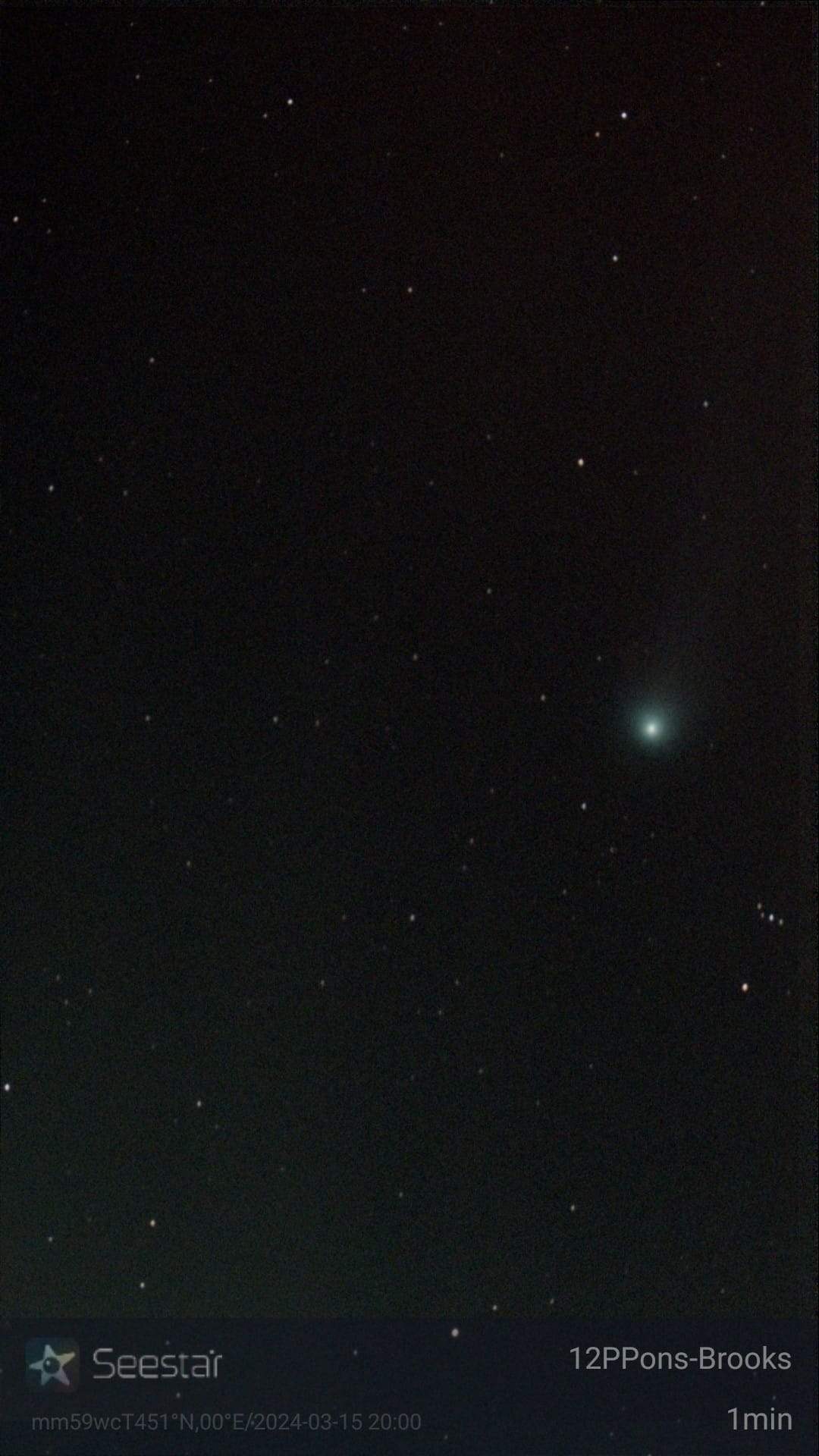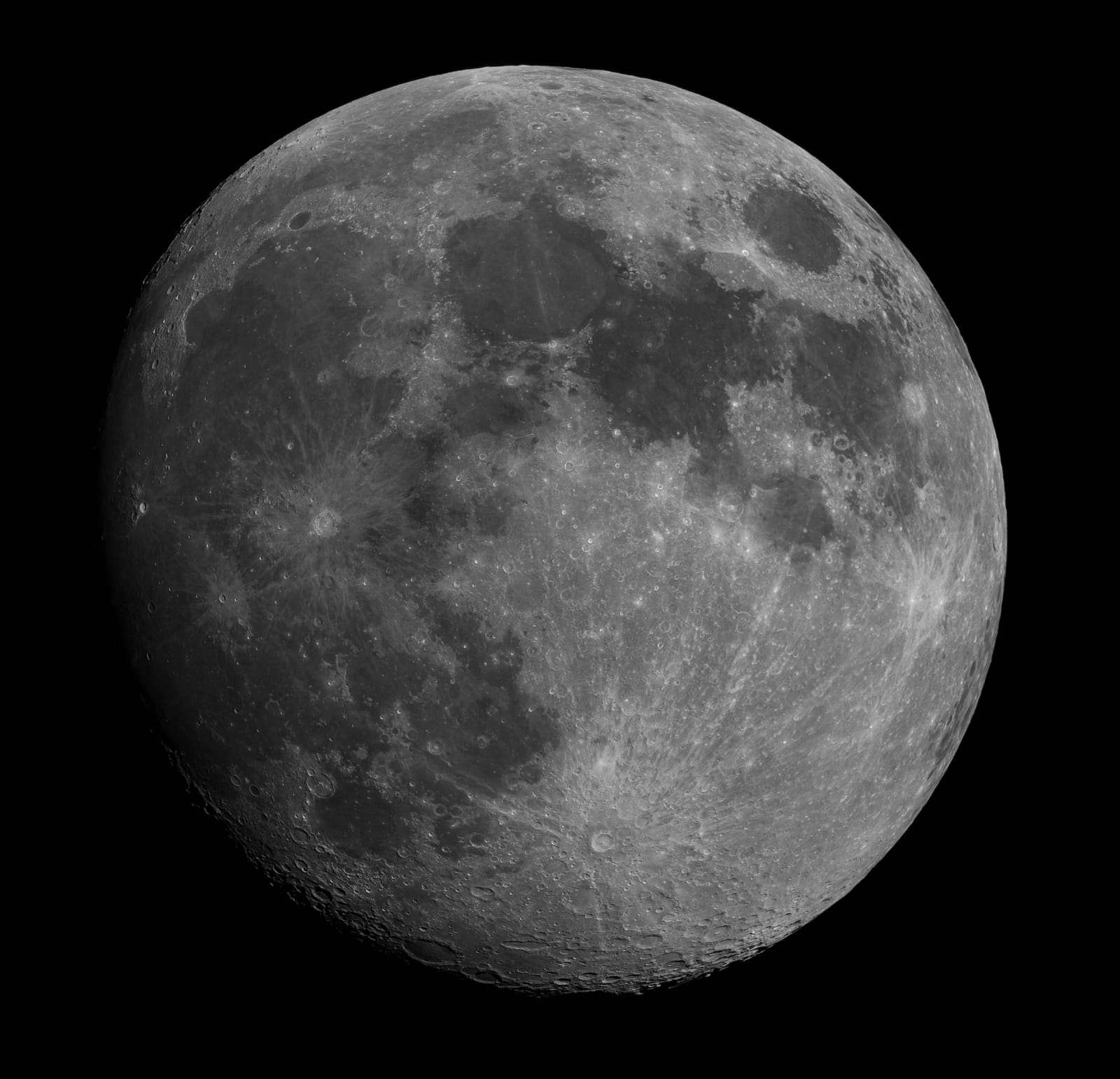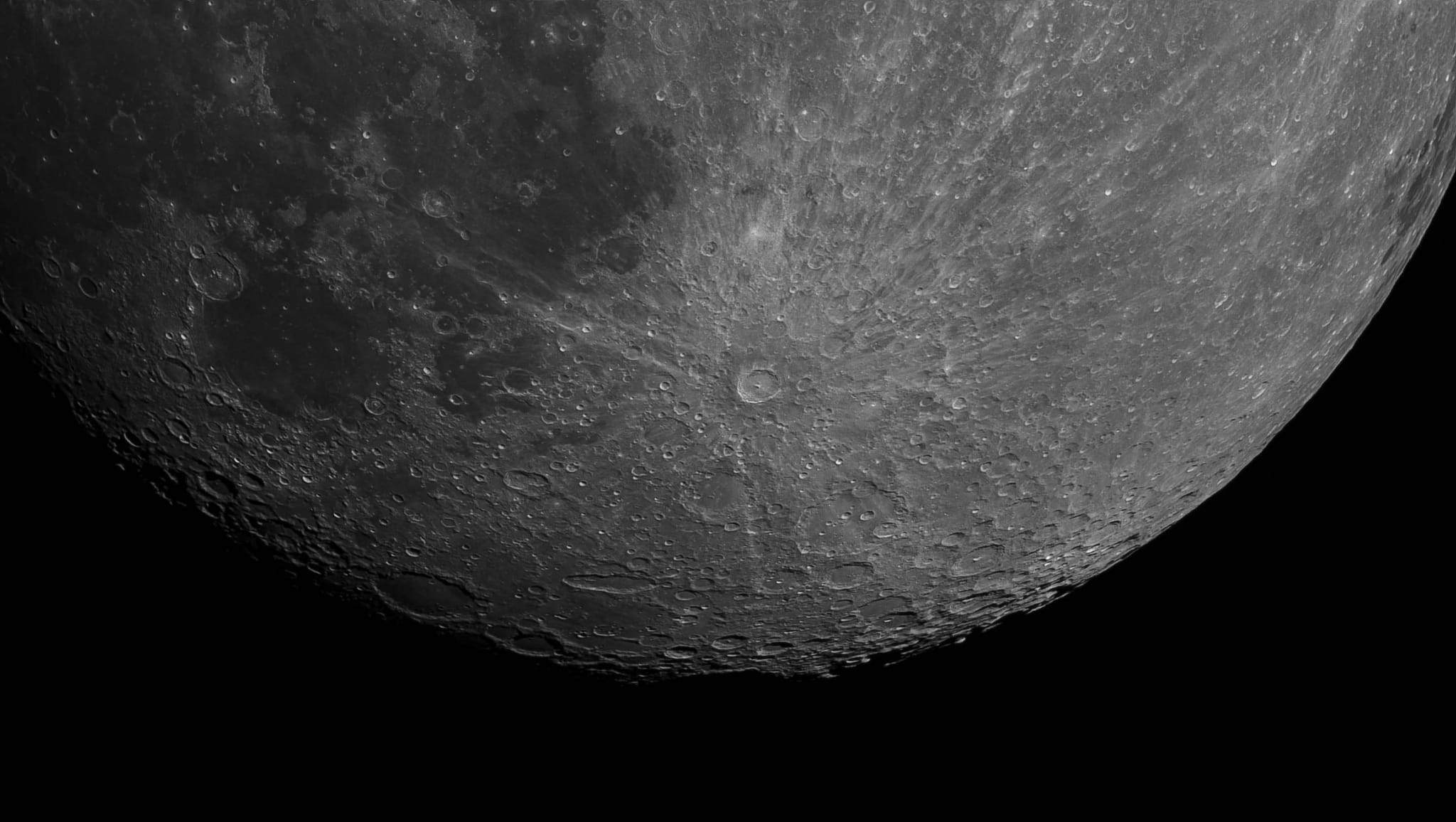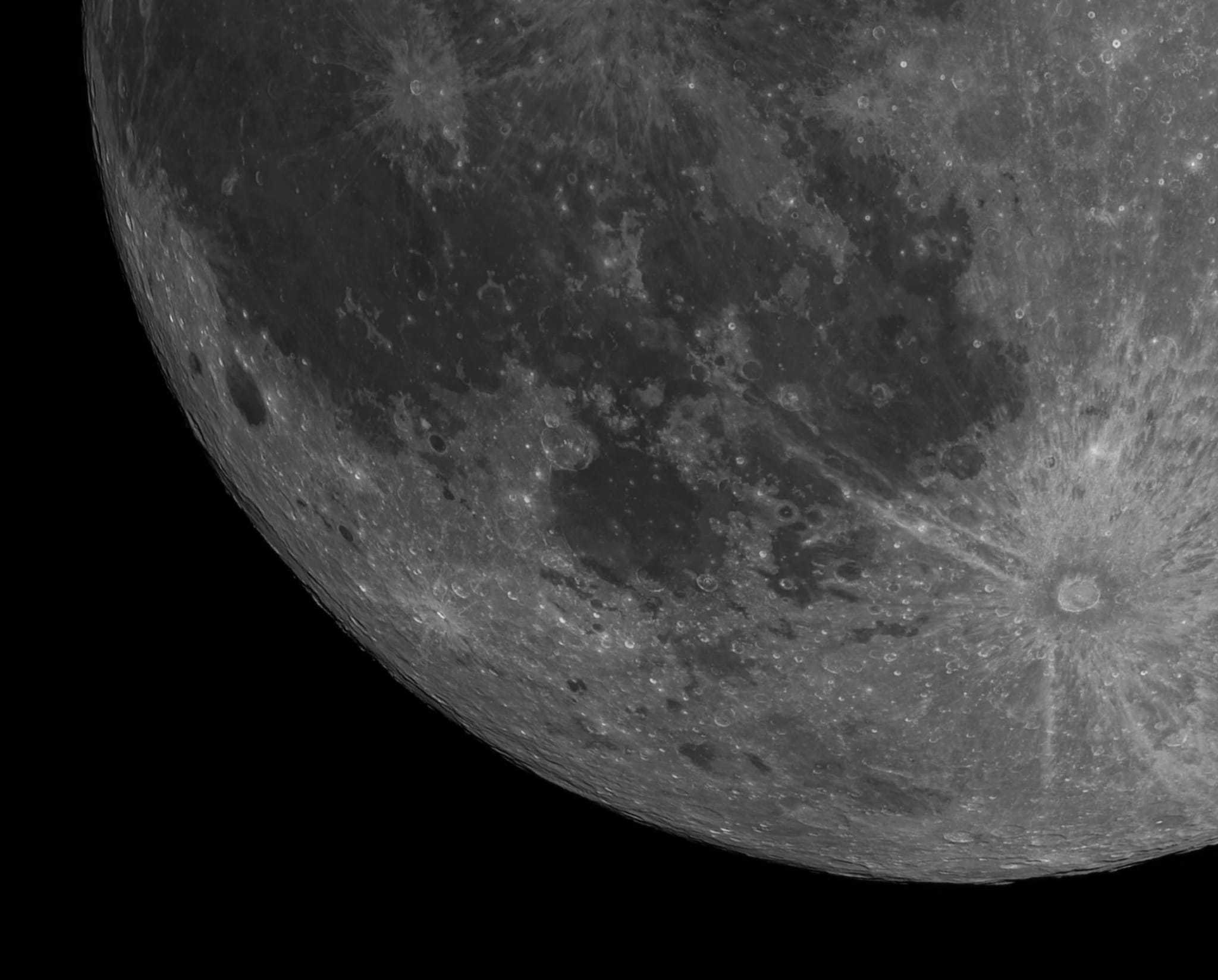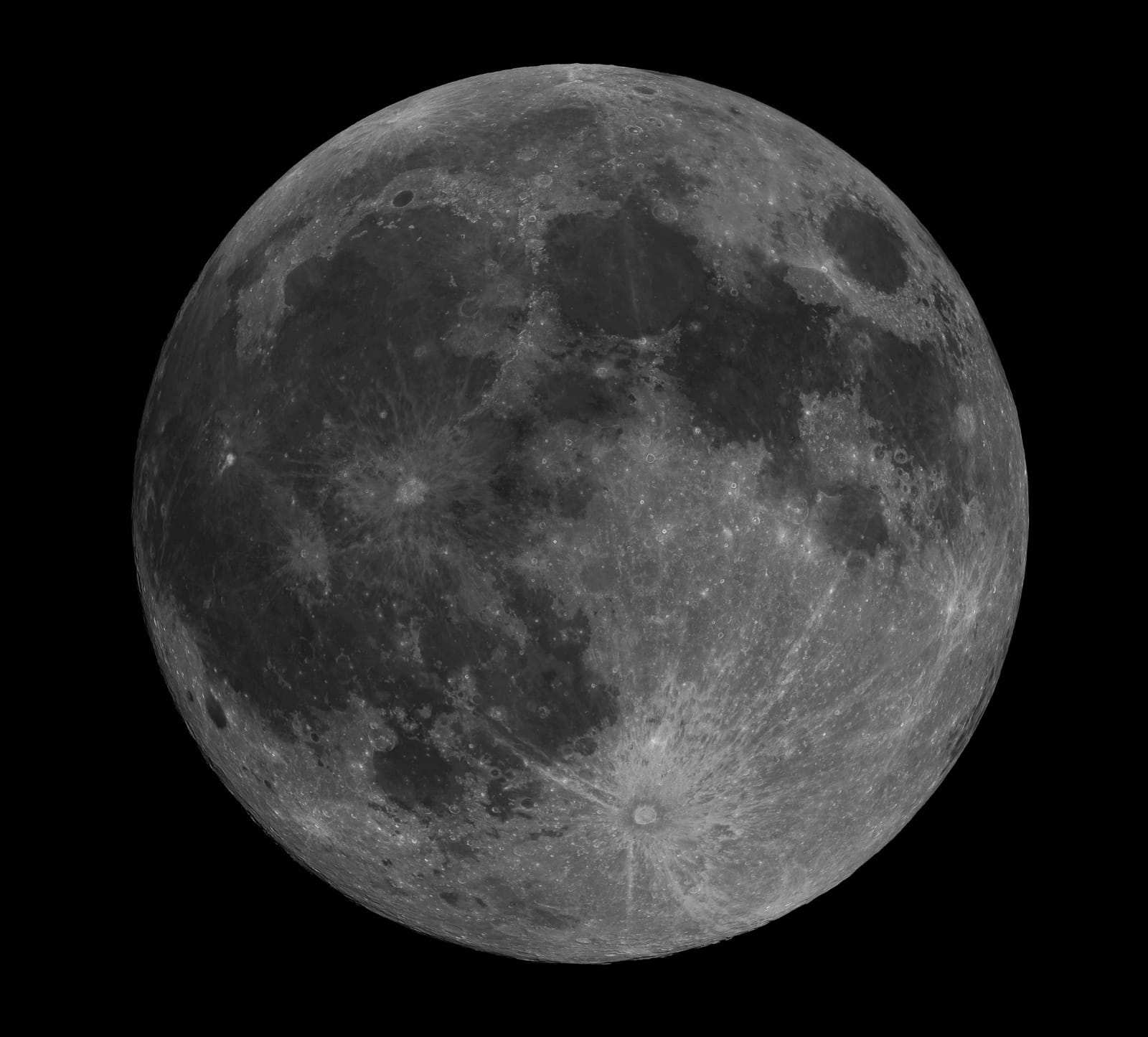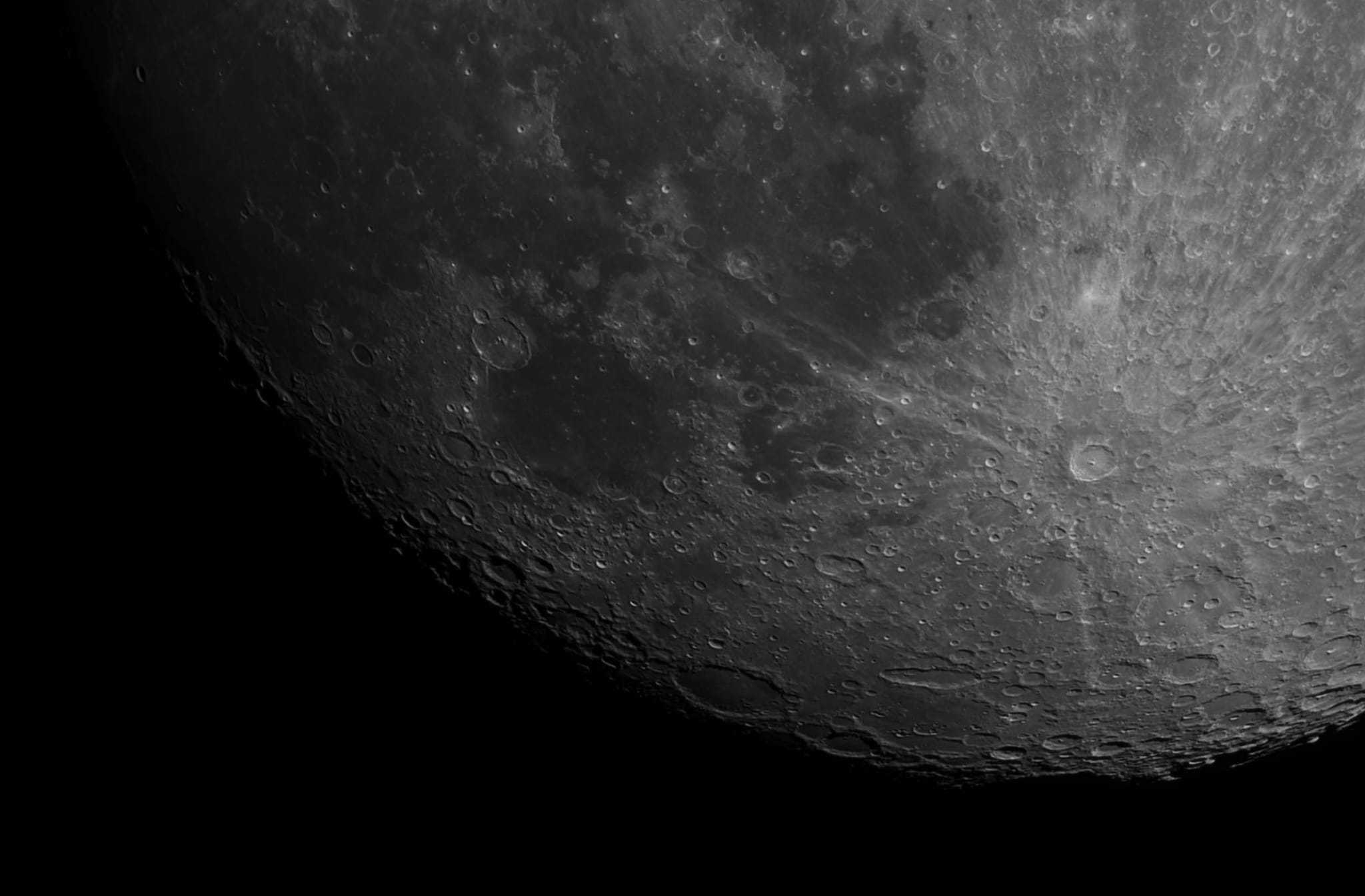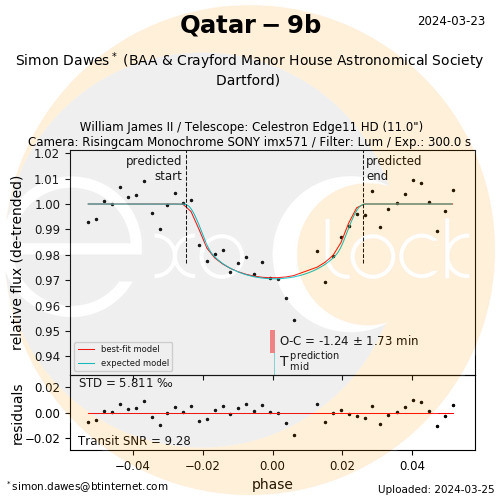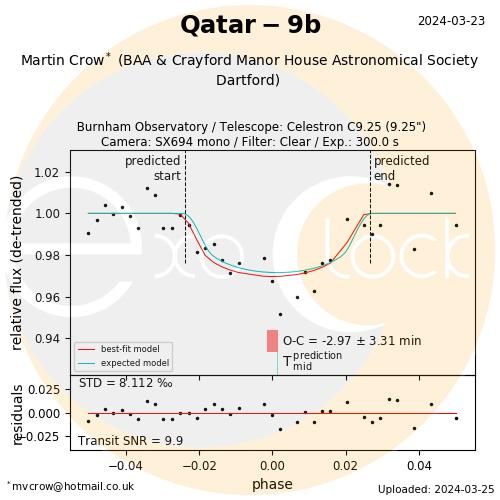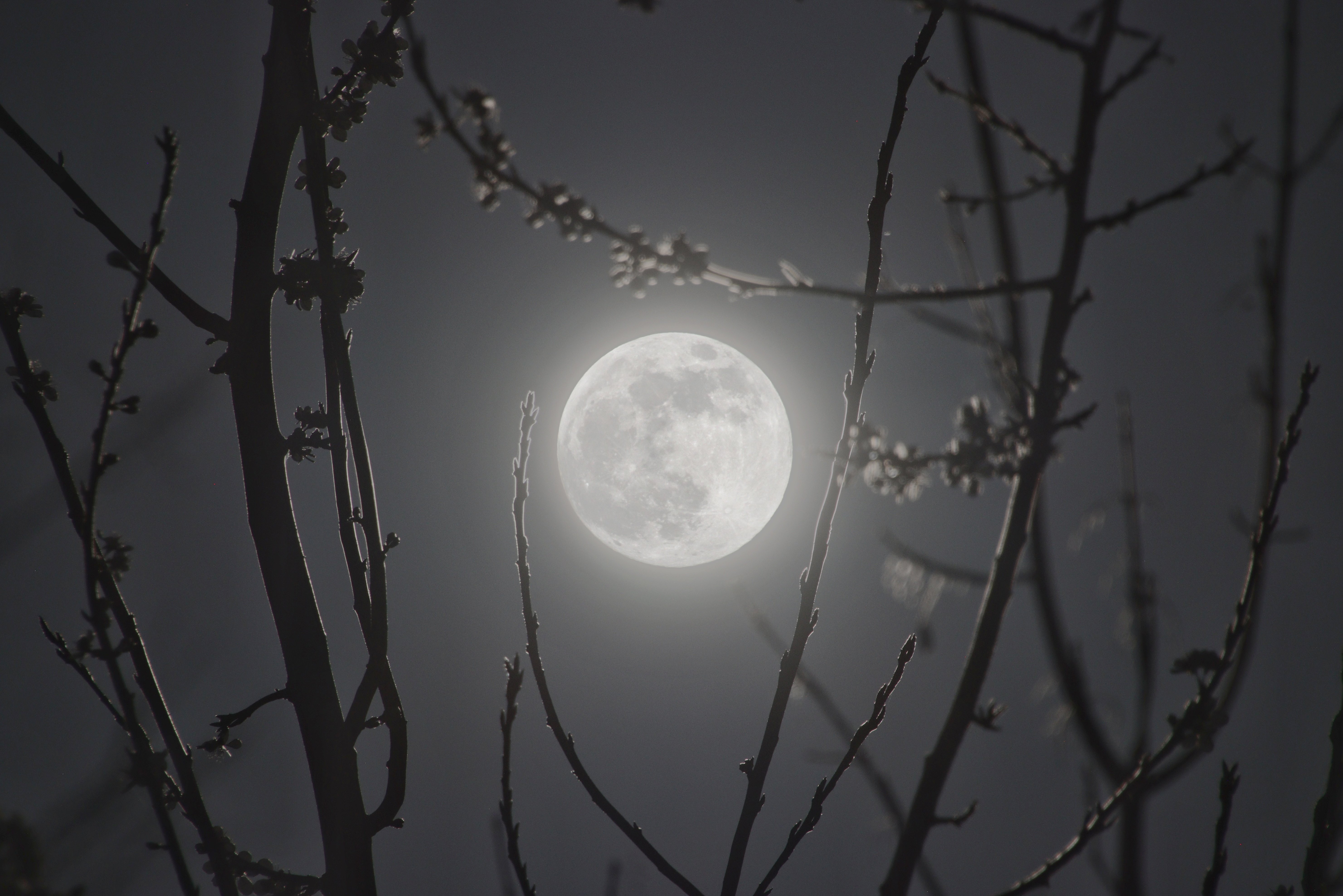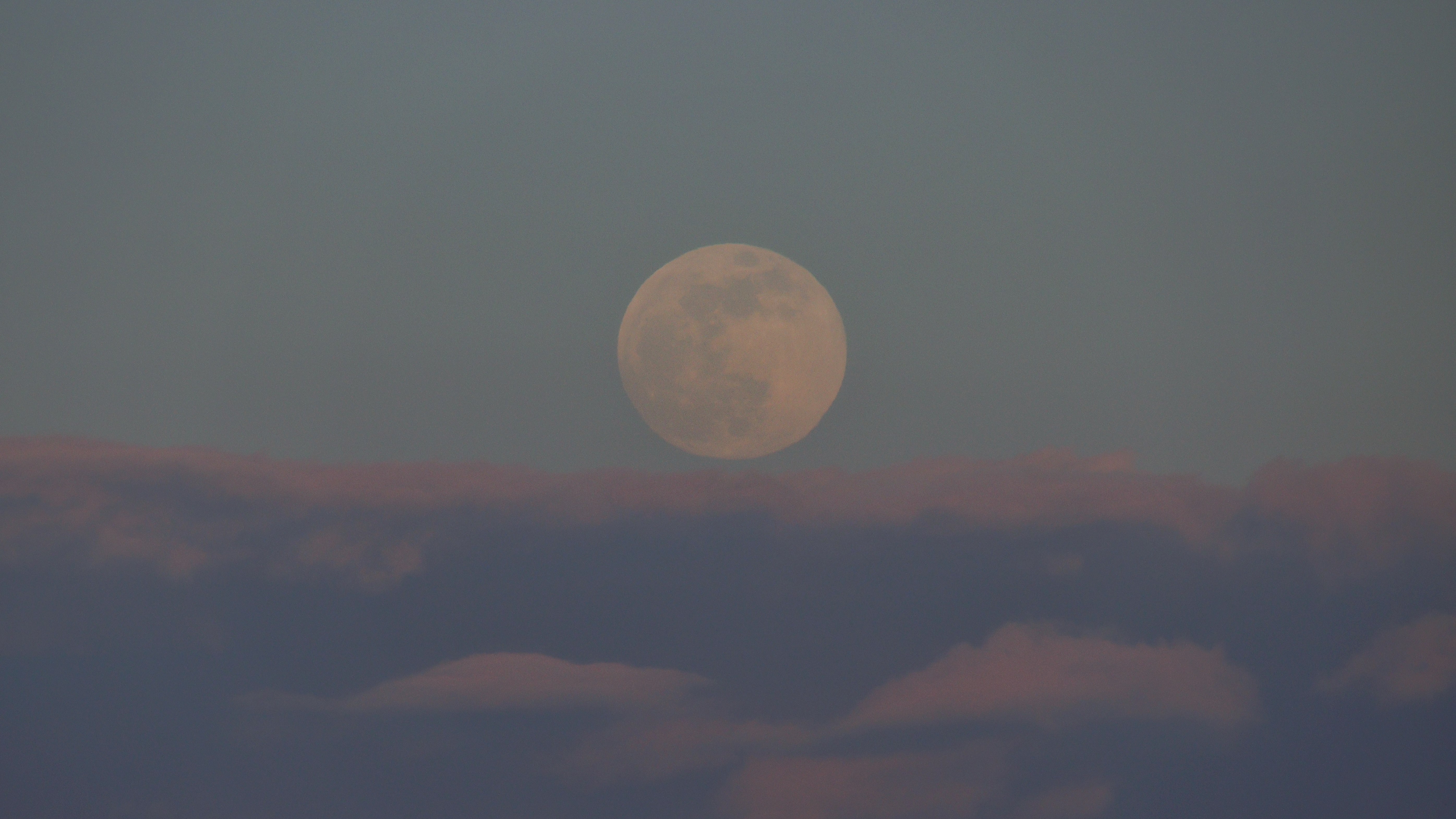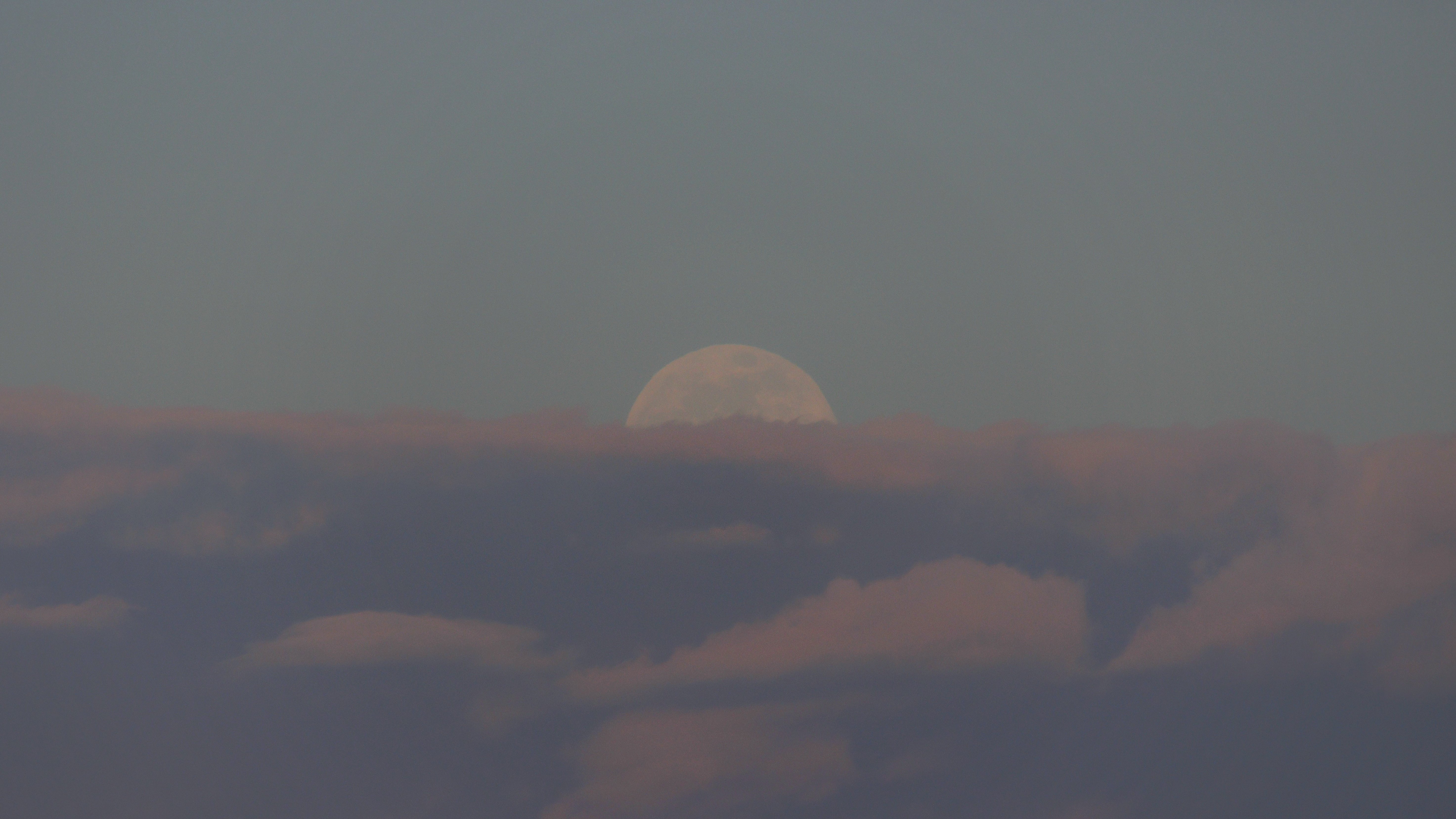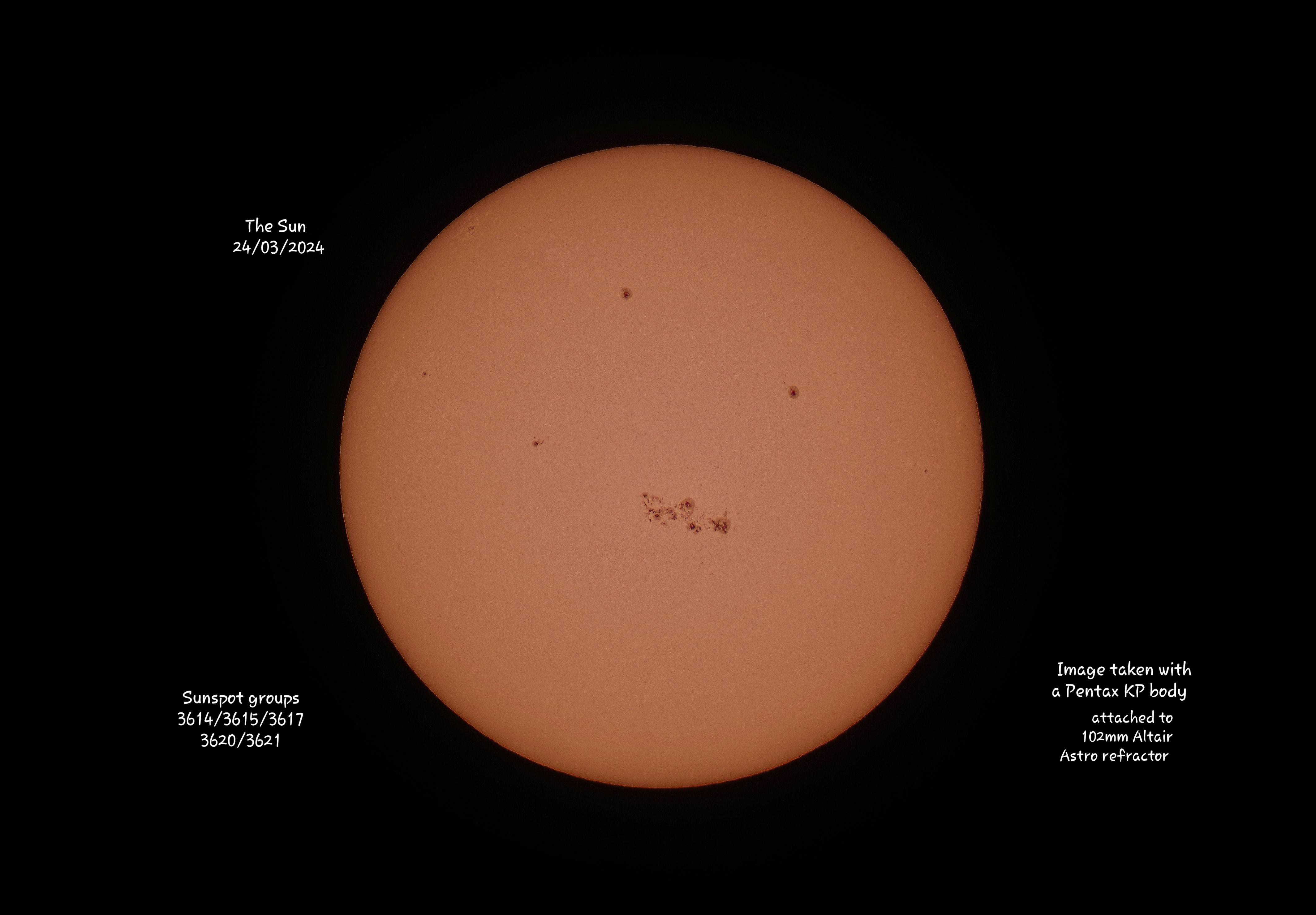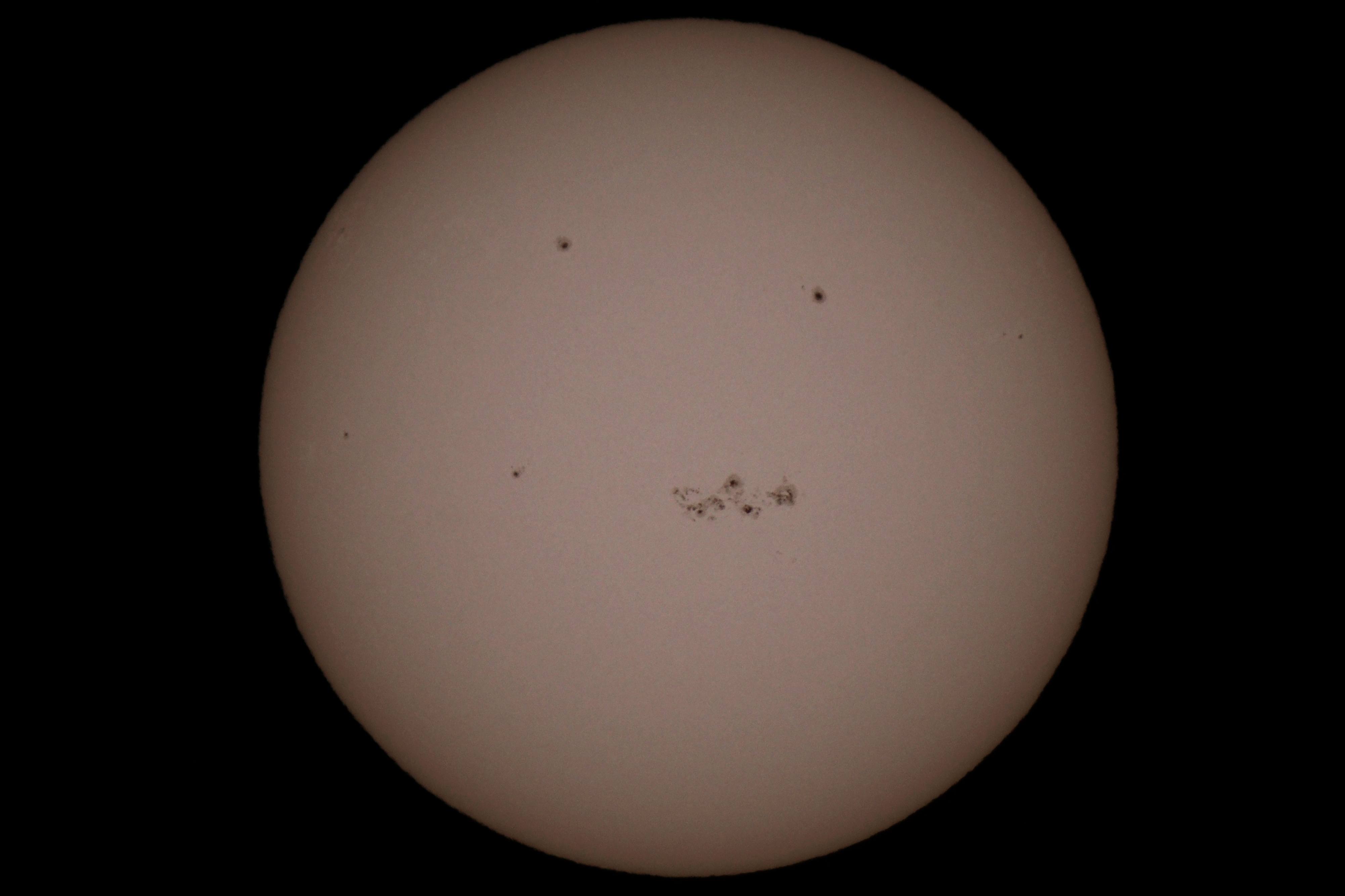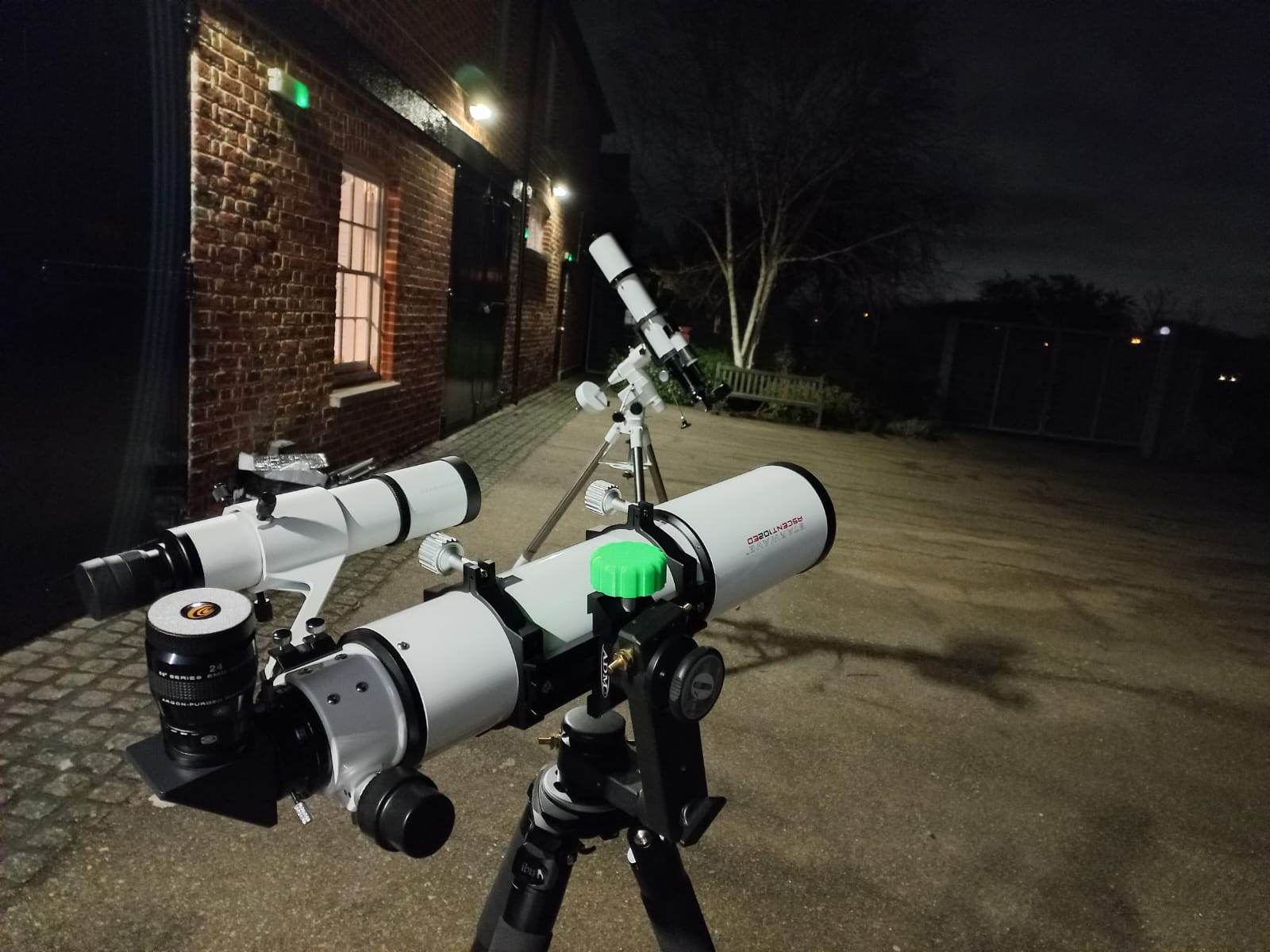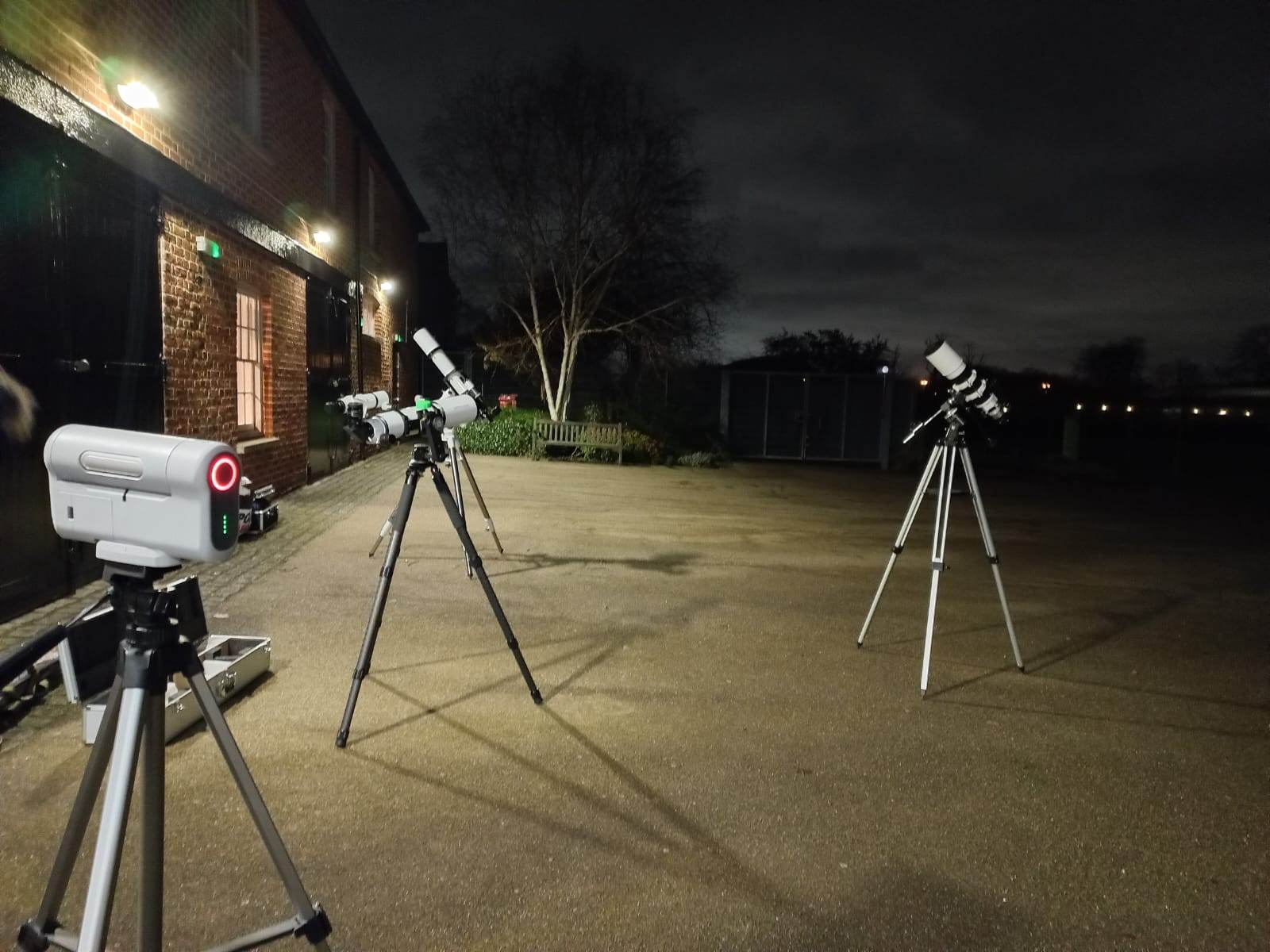Astronomy Every Thursday…
Announcements
Come and see us at Hall Place & Gardens for some Solar Observing – Sunday 5th May 2024 & Sunday 7th July 2024
NEVER LOOK AT THE SUN DIRECTLY. Please click here for solar observing safely.
CMHASD Solar Observing at Hall Place & Gardens – Sunday 5th May 2024 & Sunday 7th July 2024
11:00 am – 3:00 pm
Face-to-Face Meetings Every Thursday
Face to face meetings every Thursday plus we are live on Zoom*
As a courtesy to others please stay at home and attend via the zoom if you are feeling unwell – coughs, sniffs and sneezes etc.
* zoom will only be available with the lecturer’s consent.
Gallery
A selection of images, photos and observations taken by CMHASD members
Other Images
Sun | Comets | Mercury | Venus | Atmospheric Optics | Meteors | Auroa and NLC | Moon | Minor Planets | Mars | Jupiter | Saturn | Uranus | Neptune | Messier | Caldwell | All Deep Sky | Conjunctions | Transits | Solar Eclipse | Lunar Eclipse | Wide Field |ISS & Space Junk | Exo-Planets
Society News
Solar Eclipse – 8th April 2024
NEVER LOOK AT THE SUN DIRECTLY. Please click here for solar observing safely.
The solar eclipse of April 8, 2024, also known as the Great North American Eclipse, was a total solar eclipse visible across a band covering parts of North America, from Mexico to Canada and crossing the contiguous United States. A solar eclipse occurs when the Moon passes between Earth and the Sun, thereby obscuring the Sun. A total solar eclipse occurs when the Moon’s apparent diameter is larger than the Sun’s, blocking all direct sunlight. Totality occurs only in a limited path across Earth’s surface, with the partial solar eclipse visible over a larger surrounding region. Ref:https://en.wikipedia.org/wiki/Solar_eclipse_of_April_8,_2024
Member Richard Bohner took these two superb partial solar eclipse photos at approximately 11:20 am from Cottonwood, in Arizona, USA on the 8th April 2024.
Richard captured the images using a Celestron 8” SCT fitted with a solar filter and a Canon 6D set at 1/30 second exposure and ISO 1600.
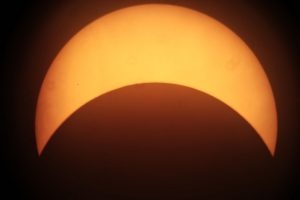
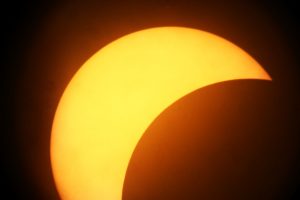
For more information about the total solar eclipse on the 8th April 2024 check out https://en.wikipedia.org/wiki/Solar_eclipse_of_April_8,_2024.
Stunning Solar Halo by Honor Wheeler
NEVER LOOK AT THE SUN DIRECTLY. Please click here for solar observing safely.
Two stunning Solar Halo images taken by member Honor Wheeler on the 14th April 2024 from Winchester.
Honor captured the Solar Halo’s using a Canon M6II fitted with a Samyang 8mm fisheye lens, ISO100, 1/2500’s & 1/3200’s.
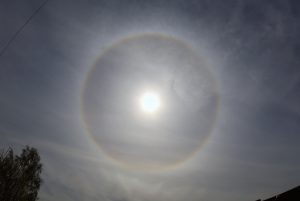
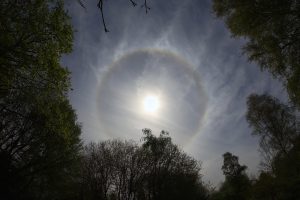
For more information about Solar Halo’s and how they are formed check out https://atoptics.co.uk/blog/atmospheric-halos/.
The Sun – 24th March 2024
NEVER LOOK AT THE SUN DIRECTLY. Please click here for solar observing safely.
A super image of the Sun taken on 24th March 2024 by member Honor Wheeler.
Honor captured the white light image of the Sun using an ED80 Refractor fitted with a solar filter, EQ3-pro Synscan mount, 2x Barlow, Canon M6 II. Exp1/6400s and ISO400.
Below Honor’s image is an image of the Sun on the same day with the sunspots labelled taken from Spaceweather.com.
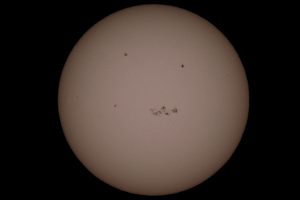
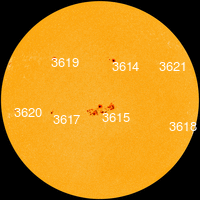
Photo Ref: https://www.spaceweather.com/archive.php?view=1&day=24&month=03&year=2024
Spaceweather.com reported ”Yesterday, the sun produced a solar flare so strong, it took two sunspots to make it. Sunspots AR3614 and AR3615 exploded in tandem on March 23rd (0130 UT), directing their fire straight at Earth. A National Solar Observatory telescope in Australia recorded the double blast.
The explosion from AR3614 (top) was so violent it seemed to rip the fabric of the sun, while AR3615 (bottom) followed very close behind with a less intense blast of its own.
While this may seem like an incredible coincidence, it probably didn’t happen by chance. Researchers have long known that widely-spaced sunspots can explode in tandem. They’re called “sympathetic solar flares.” Occasionally, magnetic loops in the sun’s corona fasten themselves to distant pairs of sunspots, allowing explosive instabilities to travel from one to the other. This has apparently happened to AR3614 and AR3615.
Some sympathetic flares are so much alike, they are considered to be twins. Yesterday’s double-blast was not a perfect twin, but close enough. It shows that the two sunspots are linked, raising the possibility of more double-flares…”
The NASA Solar Dynamics Observatory captured the sequence and it can be viewed in this movie.
The Worm Moon by Honor Wheeler
Three fantastic Full Moon images taken by CMHASD member Honor Wheeler on the 24th March 2024 from North Kent.
This is the first Full Moon of the spring season and appeared on the night of Sunday 24th March and Monday 25th March reaching its peak illumination in the early hours of Monday 25th March 2024.
In March, the Full Moon is also known as the Worm Moon and if it occurs on or after 21st March it is also known as the Paschal Moon, which is used to determine the date of Easter. In some years the Paschal Moon is the Worm Moon as in this year 2024; in others, it’s the Pink Moon (Full Moon in April). The dates for the Paschal Moon range from the 21st March to the 18th April.
Moonrise half risen
Honor used a Canon M6II, Tamron 18-400mm lens set to 400mm, F8.0, exp1/640s and ISO400.
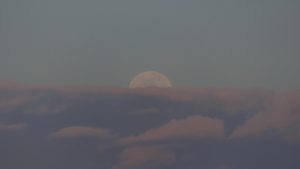
Full Moonrise
Honor used a Canon M6II, Tamron 18-400mm lens set to 400mm, F8.0, exp1/640s and ISO400.
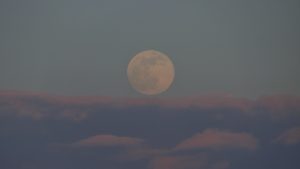
Full Moon and Blossom
The image below is a composite photo of the moon through an Apricot tree in bloom. The first photo was focused on the moon the second focused on the tree then overlayed using snapseed.
Honor used a Canon M6 II, Tamron 18-400mm lens and Tripod.
For the Moon exposure the settings were; lens set to 400mm, F8.0, exp1/3200s and ISO800.
For the tree exposure the settings were; lens set to 400mm, F8.0, exp1.1/3sec and ISO800.
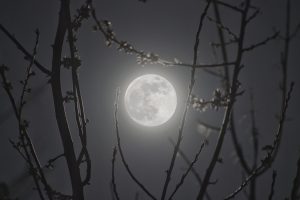
For more information about the March Full Moon check out https://www.almanac.com/content/full-moon-march and https://www.timeanddate.com/astronomy/moon/worm.html
Comet 12P/Pons-Brooks by Jim Burchell
Another fantastic image of Comet 12P/Pons-Brooks captured on the 27th March 2024 by Jim Burchell using his Seestar S50 smart scope. The image consists of 24 x 10 second images stacked.
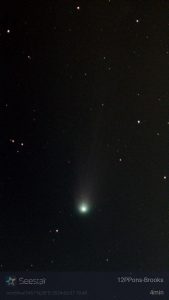
For more information about the comet 12P Pons-Brooks check out https://ras.ac.uk/news-and-press/news/12ppons-brooks-how-and-when-see-devil-comet
Bode’s Galaxy (M81) & the Cigar Galaxy (M82) by Jim Burchell
Bode’s Galaxy also known as Messier 81 (M81) is a grand design spiral galaxy which lies approximately 11.8 million light-years from Earth, with an apparent magnitude of 6.9.
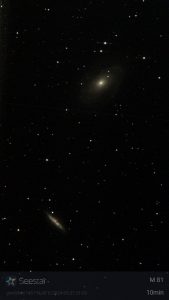
Exoplanet transit of Qatar-9b
One more for the Exoclock project. This time the transit of exoplanet Qatar-9b measured by Simon Dawes and Martin Crow on the same night. Qatar-9 b is a hot Jupiter exoplanet in Ursa Major that orbits a K-type star. Its mass is 1.19 Jupiters, it takes 1.5 days to complete one orbit of its star and is 0.0234 AU from its star. Its discovery was announced in 2019.
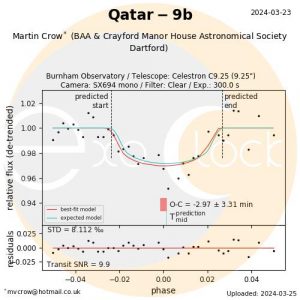
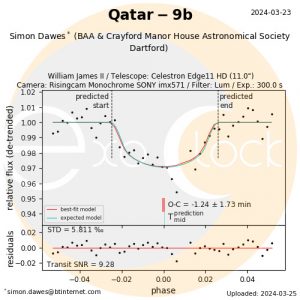
The Sun by Jim Burchell – 24th March 2024
NEVER LOOK AT THE SUN DIRECTLY. Please click here for solar observing safely.
A super image of the Sun taken by member Jim Burchell. The image is showing an extremely large Sunspot group AR3615 in the middle of the Sun.
Jim took the single image using a Pentax KP camera attached to a 102 mm Altair refactor fitted with a solar filter and then processed in Snapseed.
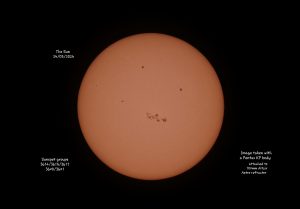
The Moon by Neil Webster
A super selection of Moon images taken by member Neil Webster in March 2024.
22nd March 2024
A Waxing Gibbous Moon, 94.7% illuminated and 12.47days old.
7 frames each 90s x 32fps. Best 20% aligned and stacked in Autostakkert. Processed in PhotoShop.
Neil captured the Moon using an AA115 triplet APO, EQ6 R, ZWO 290MM and Astronomik R/IR filter (642-840nm).
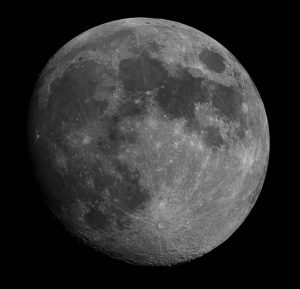
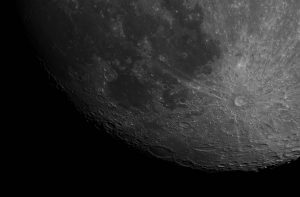
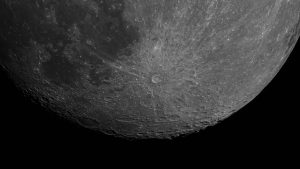
24th March 2024
A Waxing Gibbous Moon, 99.9% illuminated and 14.53 days old.
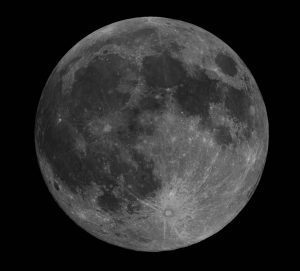
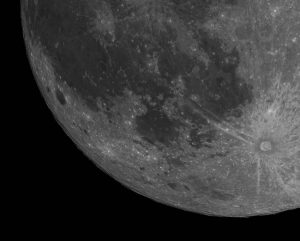
Check out Neil’s flickr page for higher resolution images at https://www.flickr.com/photos/137388222@N05/
Comet 12P/Pons-Brooks by Jim Burchell
Two fantastic images of Comet 12P/Pons-Brooks taken on the 15th & 18th March 2024 by member Jim Burchell. The images were taken using a Seestar S50 smartscope. On both nights Jim had a very small amount of time to capture the comet due to clouds rolling in. The image taken on the 15th is a stack of 6×10 second images and the image on the 18th is a stack of 18×10 second images.
Comet 12P/Pons Brooks on 15th March 2024
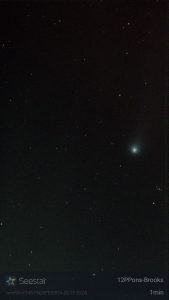
Comet P12/Pons Brooks on 18th March 2024
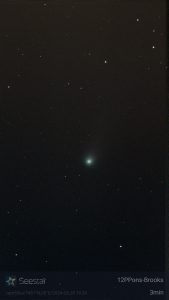
For more information about the comet and how to locate it check out https://www.skyatnightmagazine.com/advice/comet-12p-pons-brooks
The Sun – 25th Feb 2024 by Jim Burchell
NEVER LOOK AT THE SUN DIRECTLY. Please click here for solar observing safely.
A splendid image of the Sun taken on the 25th February 2024 by member Jim Burchell. Jim captured the image using a Seestar S50 smart scope fitted with a solar filter and processed in Snapseed. The giant sunspot AR3590 that can be seen on the Sun in Jim’s image was more than ten times wider than Earth when the image was taken.
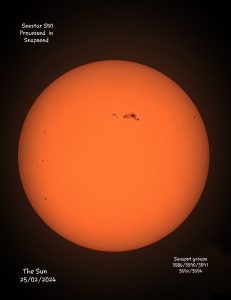
Messier 52 by Diane Clarke
A super image of Messier 52 or M52, also known as NGC 7654 taken by member Diane Clarke on the 6th March 2024 during a brief clear spell in the weather.
Messier 52 is also known as the Scorpion Cluster or the Salt & Pepper Cluster and it is an open cluster of stars in the constellation of Cassiopeia. The cluster has an apparent magnitude of 6.9 and lies at an approximate distance of 4,600 light years from Earth.
Diane acquired the image using a Seestar S50 smart scope, 270 x 10s subs, stacked & processed using Affinity Photo.
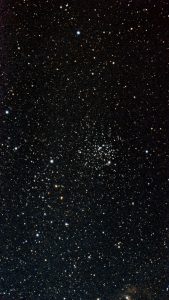
ExoPlanet transists 2023 by Simon Dawes
A nice montage of the ExoPlanet transists Simon did in 2023 for the ExoClock project.
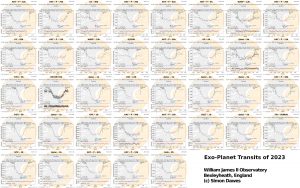
The Whirlpool Galaxy (M51a) by Diane Clarke
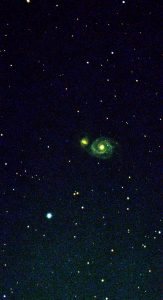
The Orion Nebula by Jim Burchell
A lovely image of the Orion Nebula (Messier 42/M42) taken by Jim Burchell on the 23rd February 2024 using a ZWO SeeStar S50 smart scope. The image is a stacked image containing 12 minutes of 10 second images. Jim said ”Considering the Moon phase was 97%...
The Orion Nebula (M42) by Dr Mike Rushton
A superb image of the Orion Nebula (Messier 42/M42) taken by Dr Mike Rushton on the 3rd March 2024. Mike acquired the image using a Dwarf2 telescope from DWARFLAB and took 400 subframes of 10 secs which was then processed in...
The Sun by Jim Burchell – 1st March 2024
NEVER LOOK AT THE SUN DIRECTLY. Please click here for solar observing safely. Super image of the Sun taken by member Jim Burchell on the 1st March 2024. The image was taken using a Pentax KP body set at Iso 200 & 1/400 sec, attached to...
IC434, Horsehead Nebula and NGC2024 Flame Nebula by Kevin Langford
A fantastic image of IC434, the Horsehead Nebula & Flame Nebula (NGC2024) in the constellation Orion by member Kevin Langford. The image was taken on the 19th January 2024 from Bexley, Kent. Kevin acquired his image using a ES 102ED APO, 0.7x focal reducer...
AstroFest 2024
Many members have been at AstroFest this weekend, but it looks like the cost of living crisis and high prices seem to be having an impact, with many retailers and manufacturers not exhibiting at AstroFest this year. At least there isn’t the crush of people from...
Janice Receives the Lydia Brown Medal from the BAA
Janice received the Lydia Brown medal from the BAA in recognition of meritorious service to the Association in an honorary capacity over many...
Occultation of Asteroid 2000 SZ278
Observation of an occultation by Asteroid 2000 SZ278 using an eVscope by Mike Rushton. Mike has just started analysing these himself rather than sending them off to California for a bot to do the work. Asteroid 2000 SZ278 which is a Main Belt member and only...
The Moon – 17th Dec 2023
A lovely image of a Waxing Crescent Moon taken on the 17th Dec 2023 by member Honor Wheeler. On this day the Moon was 4.72 days old, 27.01% illuminated and in the constellation Aquarius. The image was taken using a Skywatcher ED80 Refractor, Skywatcher EQ3 Synscan...
CMHASD Christmas Quiz – 2023
Congratulations to team Dalek for winning this years CMHASD Christmas Quiz. Team Dalek Member’s Rita Whiting and Debra Holton pulled out all the stops to provide a night of head scratching, puzzlement and fun. Thank you Rita & Debra for all your...
The Moon – 19th Dec 2023
A stunning 10 frame image of the Moon taken by member Neil Webster on the 19th Dec 2023. The Moon was in the First Quarter phase, 47% illuminated, 7.07 days old and in the constellation Pisces. The First Quarter phase comes roughly 7 days after the New Moon and...

